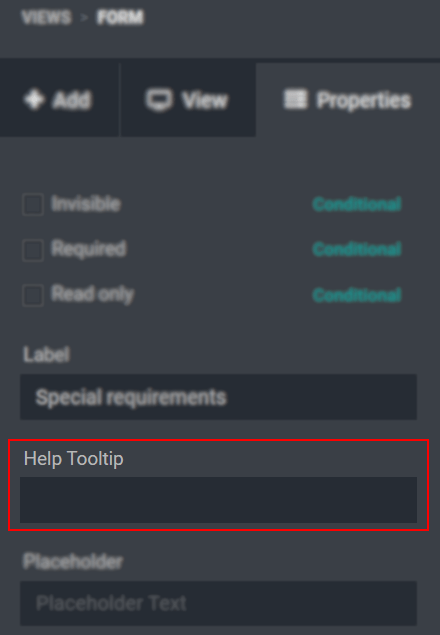- Case scenario 1: on the leads’ form, if the chosen country is France, show a field
‘Pay by check?’
On your leads’ form, add a Related Field to Country > Country Name.
Now, add a Checkbox field and define its invisibility options as Country (carefully select
the one just created) > is not = > France.
You can now hide the related field created (Country) if you wish.

Another approach is to use the country’s ID. To do so, go to
, select France (for example), and on the
URL check its ID.
The related field invisibility path should now be Country (carefully select the one just
created) > is not = > 75.
Again, hide the related field with the country’s ID if you prefer.

- Case scenario 2: create a model called ‘Properties’ and add fields called: company, value, name,
address, active, image.
From the dashboard, (optionally) start a new module. Then, click on Edit Menu and start a
New Menu (model). Set your menu name and Confirm. Now, on its form, drag & drop the necessary
fields.
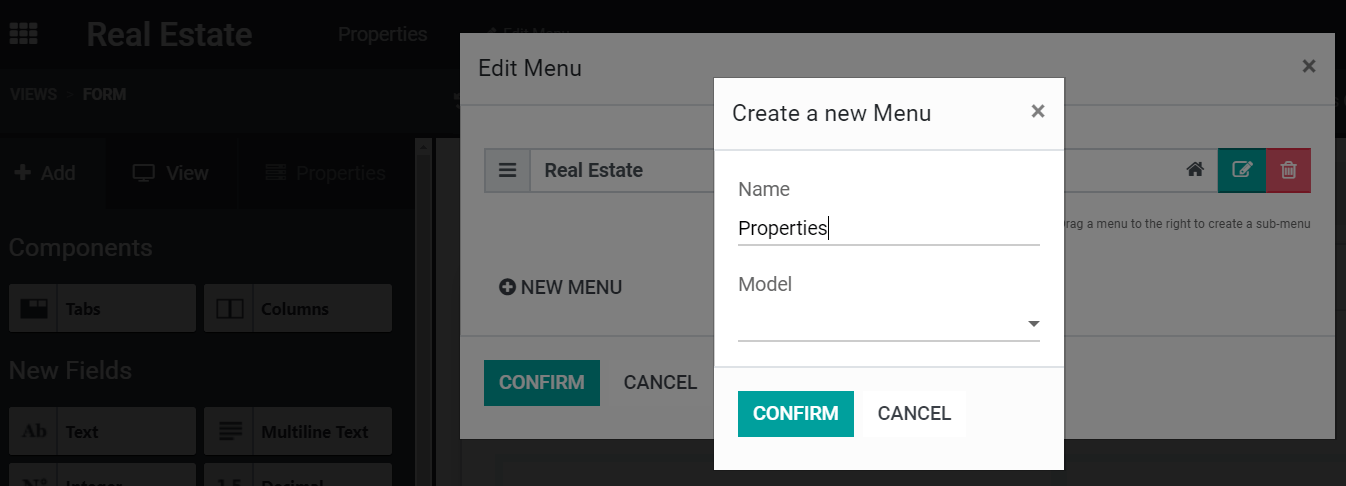
- Case scenario 2.a: now, you would like to have a model called ‘Regions’ to which each property
must be linked. And, on ‘Regions’, you would like to see the properties for each region.
Go to Edit Menu > New Menu and create your menu, calling it Regions. Add the necessary fields
on its form by dragging & dropping them.
Now, in the form view of Properties, add a Many2one field with a relation to your model
Region.
小技巧
The Existing Fields are the ones that are on the current model but not yet in the view.
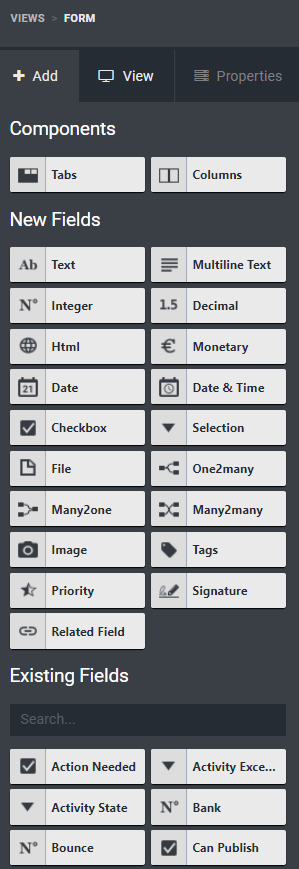
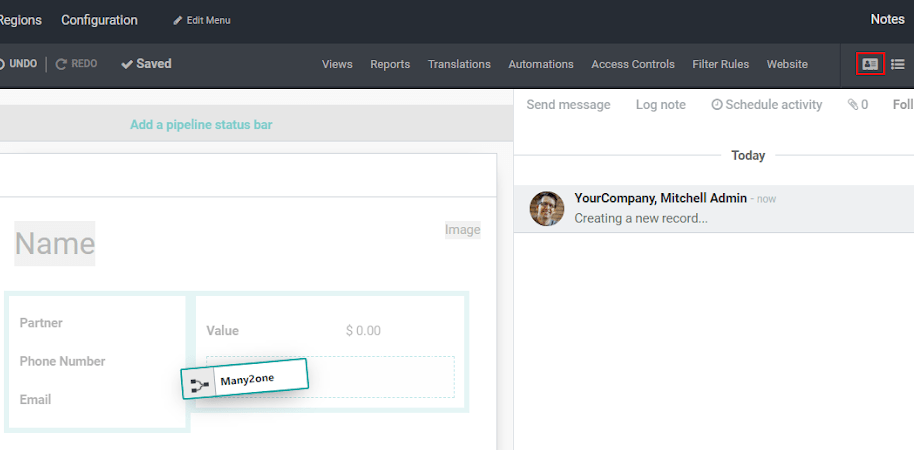
Now, go to the model Regions, select the form view, and add a status button selecting Regions
(Properties) as your relational field.
Status buttons are computed fields, meaning that they count the numbers of records on the
related model, and allow you to access them.

小技巧
When searching for relations, click on Search more and filter it by Custom. This way you
avoid creating duplicates.
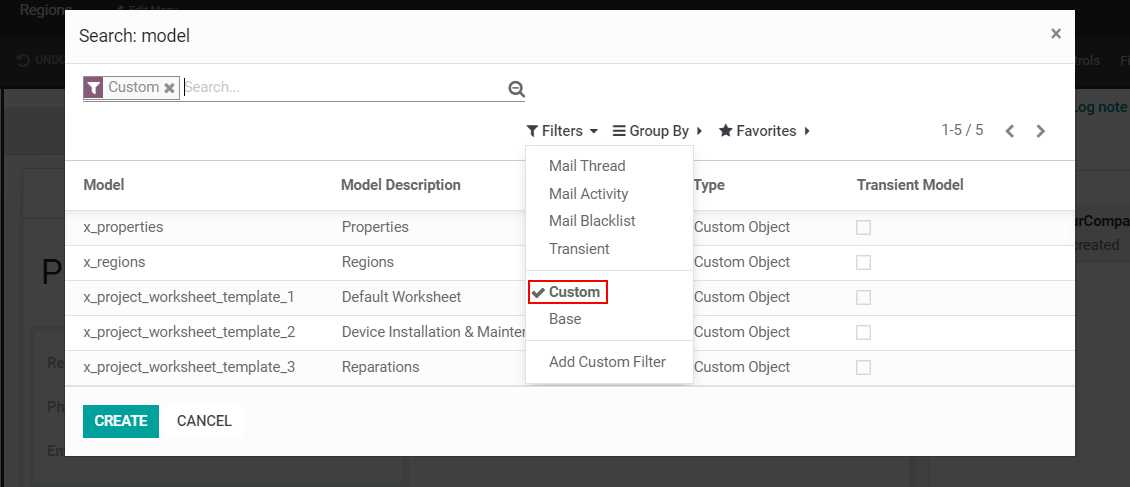
- Case scenario 2.b: in the model ‘Properties’, show all the tags as checkboxes instead of tags.
Once the field Tags is added to the form, select it and, under its Properties > Widgets, choose
Checkboxes.

- Case scenario 3: on the leads’ form, add a selection field with the values:’Tags’ & ‘List’ &
‘Checkboxes’. According to the value of the field, show tags as many2many_tags, many2many_radio,
or many2many(_list).
In your form view, add a Tags field and relate it to Partners Tag. Under Properties, define
its Widget as Many2many. Do the same process another 2 times for Checkboxes and Tags.
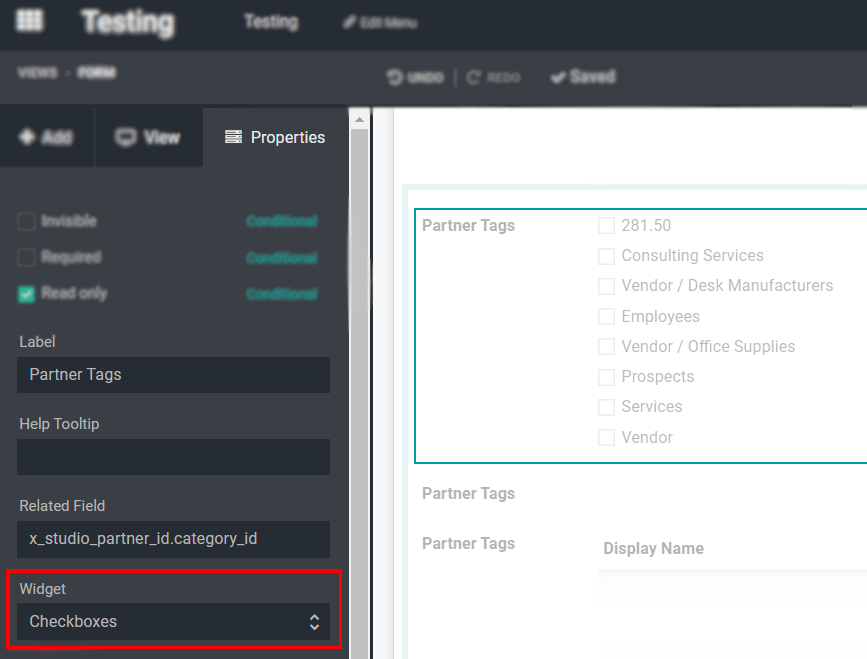
Now, add a Selection field and the necessary values.
Continue by selecting your Tags fields, one by one, to set their Invisible options according
to their Widget. In the example below, the invisibility rule for the Partner Tags is set as:
Select Tag type > is not = > Tags.

- Case scenario 4: on a quotation’s form, add a selection field called ‘Manager Validation’ with
the values: ‘Accepted’ and ‘Refused’. Only a sales manager can see it, and the field should be
set as mandatory if the untaxed amount is higher than 500€.
On your quotation form, add a Selection field with the values Accepted and Refused. Set its
Required condition as Untaxed Amount > 500 and the Limit visibility to groups as Sales /
Administrator or managers.

- Case scenario 5: change the tooltip of a field for all views.
Select the necessary field and, under Properties, click on More to write your tooltip message
on Field Help. The tooltip message is the explanatory message shown when the user hovers the
field. The message here written is displayed on all views forms where the field is added.
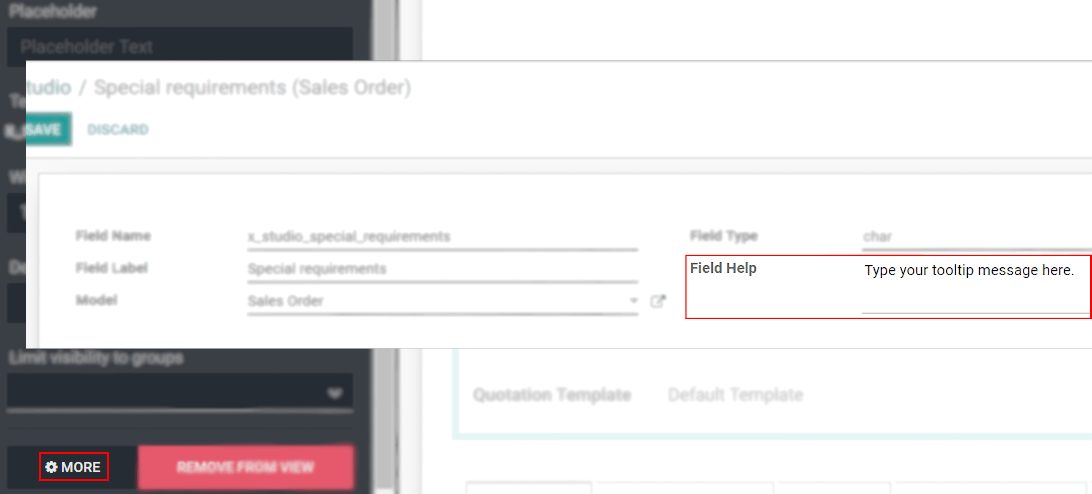
注解
The Field Help message can only be applied to new fields. If you would like to change/apply a
tooltip for a specific field, use the Help Tooltip option under Properties.
